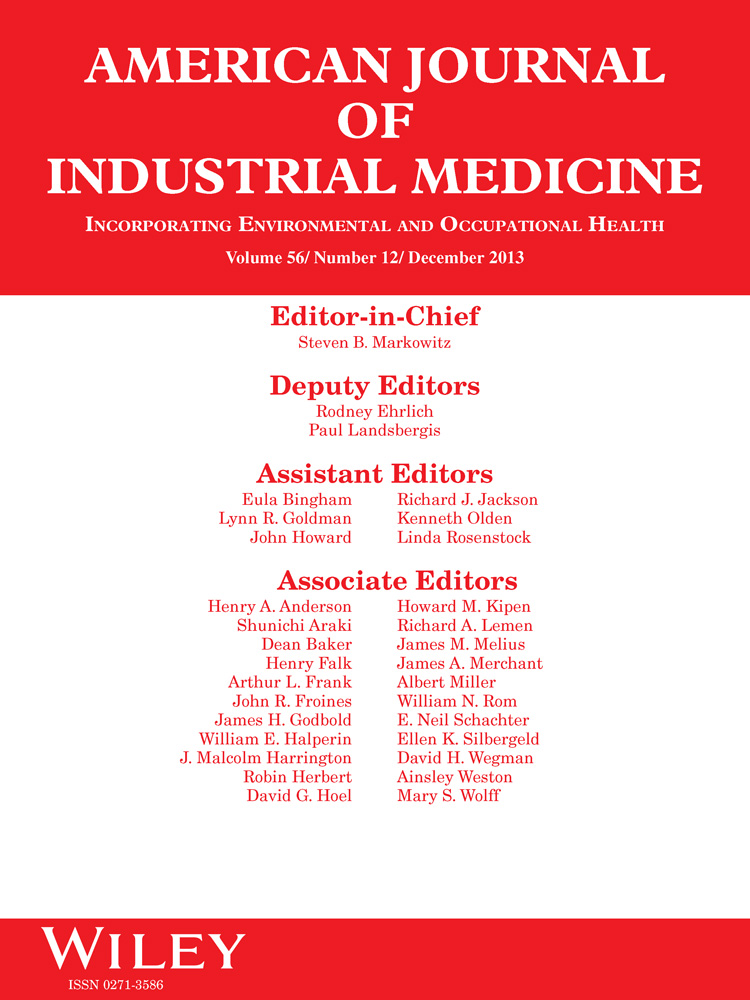The interaction effect of effort-reward imbalance and overcommitment on hypertension among Chinese workers: Findings from SHISO study
Abstract
Background
No previous studies investigated the interaction of effort-reward imbalance (ERI) and overcommitment on blood pressure. Our aim was to investigate associations of ERI and overcommitment (and their interaction) with blood pressure and hypertension within a Chinese population.
Methods
Seven hundred thirty-four participants from the Stress and Health in Shenzhen Workers study completed a demographics, job stressor and risk factor questionnaire, and their blood pressure was measured by mercury sphygmomanometers. Risk factors for blood pressure were analyzed by multiple linear regression and risk factors for hypertension by Poisson regression.
Results
Overcommitment was associated with diastolic blood pressure after adjustment for confounders and ERI among men (β = 0.17, P < 0.05); ERI was also associated with diastolic blood pressure and systolic blood pressure after adjustment for confounders and overcommitment. High overcommitment (PR 1.91, 95% CI 1.35–2.69), and ERI (PR = 2.47, 95% CI 1.62–3.75) were each associated with risk of hypertension after adjusting for confounders. After adjusting for ERI, the association with overcommitment was no longer significant (PR = 1.24, 95% CI 0.85–1.82) However, after controlling for overcommitment, ERI remained significantly associated with hypertension risk (PR = 2.38, 95% CI 1.53–3.71). When high overcommitment and high ERI was combined, hypertension risk was highest (adjusted PR = 2.99, 95% CI 1.82–4.91, adjusted synergy index 5.85). The interaction was significant when it was tested by an interaction term in the regression (P < 0.001).
Conclusions
The interaction effect of overcommitment and ERI on hypertension was independent and synergistic. Am. J. Ind. Med. 56:1433–1441, 2013. © 2013 Wiley Periodicals, Inc.




